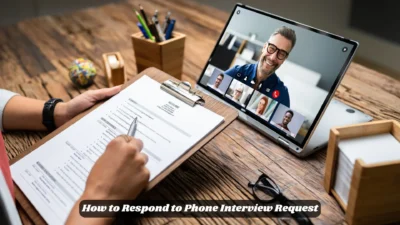So you heard someone ask que hora es and you’re now wondering how to reply — but in a better, smoother, or more native way.
Whether you’re learning Spanish, practicing conversations, or just brushing up for travel, finding the right way to respond makes all the difference. Good news — your search ends here.
In this article, you’ll get over 120 easy, natural, and helpful responses to que hora es. Different settings need different styles.
Talking with a boss? That needs a more formal touch. Chatting with a friend? Keep it casual. In business meetings or writing emails? Use a professional tone.
Even fun, idiomatic expressions can help you sound more fluent and confident.Let’s explore the best ways to respond to que hora es — the time is now!
Sorry Generator
Formal Ways to Say the Time
Use these when speaking to elders, in official settings, or when being polite is key.
- It is one o’clock sharp
- It is exactly two o’clock
- It is now three in the afternoon
- It is currently four o’clock
- The time is five on the dot
- We are at six o’clock
- The clock shows seven
- It is now eight in the evening
- We have reached nine o’clock
- It is now ten o’clock precisely
- It is just past eleven
- The time now is noon
- It is quarter past one
- It is half past two
- It is a quarter to three
- We are approaching four
- Time stands at five
- We are at six-thirty
- It is nearly seven
- It is nearly eight-thirty
- It is just after nine
- The clock reads ten-fifteen
- The time is ten forty-five
- We are a few minutes to eleven
- It is midday
- It is midnight
- The current time is twelve
- It is almost one in the morning
- It is nearly two at night
- It’s now three a.m.
- We are in the early hours of four
Informal Ways to Say the Time
Use these with friends, family, or in casual chats.
- It’s one
- Around two
- Three-ish
- Just hit four
- Pushing five
- Almost six
- Just turned seven
- It’s eight-something
- A little past nine
- Ten on the nose
- About eleven
- Noon time
- Half past twelve
- It’s one-fifteen
- Quarter to two
- Close to three
- Around four-thirty
- Nearly five
- Six, I think
- Seven or so
- Nearly eight
- Just about nine
- Ten-thirtyish
- Right before eleven
- Late morning
- Past midnight
- Almost one a.m.
- Crack of dawn
- Super early
- Barely seven
- Just after breakfast time
Idiomatic Ways to Say the Time
These are playful, colorful, and often heard in storytelling or local talk.
- High noon
- At the top of the hour
- Quarter past the clock
- Time’s tickin’ — it’s three
- The hands point to four
- It’s five bells
- Half past the hour
- Time flew to six
- The big hand’s on seven
- Clocking in at eight
- It’s nine sharp as a tack
- Ten strikes the hour
- The chimes just rang eleven
- The witching hour
- Midnight madness
- The crack of dawn
- Bright and early
- Just after coffee time
- Tea time
- It’s supper hour
- Bedtime o’clock
- The sun’s almost down — maybe six
- Twilight hour
- Just past brunch
- Way past lunch
- Right before dusk
- The rooster just crowed
- Moon’s up — about ten
- Before the sun sets
- Hour of calm
- Time to hit the hay
Professional Ways to Say the Time
Perfect for work emails, meetings, or presentations.
- It is currently 9 AM
- Our meeting starts at 10
- The scheduled time is 11
- We will begin at noon
- The session is at 1 PM sharp
- Our next slot is 2
- Deadline is by 3
- Let’s resume at 4
- The interview is at 5 PM
- Our call is scheduled for 6
- Join us at 7 PM
- The webinar kicks off at 8
- Training begins at 9 sharp
- Let’s reconnect at 10
- Wrap-up time is 11 PM
- Meeting ends at noon
- Our start time is set for 1
- We’ll follow up at 2 PM
- The presentation begins at 3
- Please be ready by 4
- Clock in by 5 AM
- Our timeline moves to 6
- The calendar says 7
- The event is marked at 8 AM
- Our shift begins at 9
- Join the briefing at 10
- Schedule your arrival for 11
- We reconvene at 12
- The update rolls out at 1
- Daily stand-up is at 2 PM
- Our agenda resumes at 3
Conclusion
Knowing how to respond to que hora es the right way makes you sound more natural and confident. Whether you’re being formal, fun, or clear at work, there’s always a way to say the time that fits. Use these phrases in real conversations and see your fluency grow every day. Keep practicing, and you’ll never fumble for a time expression again.

James Smith is an acclaimed fiction writer and storyteller whose work explores the human condition through a lens of emotional depth and sharp observation. Known for his captivating prose and unforgettable characters, James has carved a unique space in contemporary literature.
With a background in English Literature and over a decade of writing experience, his stories have been featured in numerous literary magazines and anthologies. James is passionate about mentoring emerging writers and frequently speaks at literary events and creative writing workshops.
Selected Works:
-
Beneath the Quiet Sky
-
The Echoes We Leave Behind
-
Fragments of a Forgotten Summer




